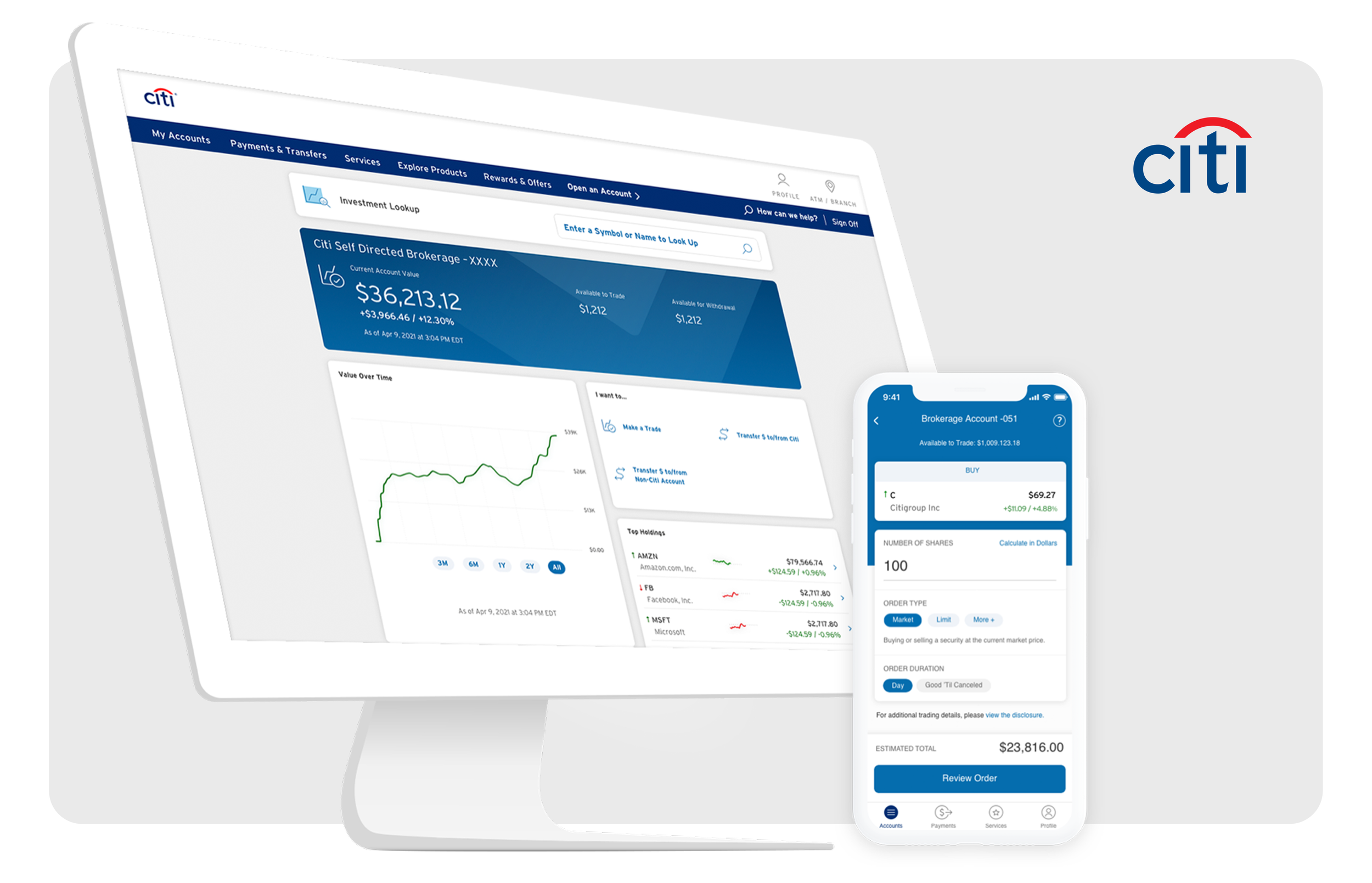
WORK
Driving impact, change, and progress.
Leadership by Design
I lead with intention, creating experiences that transform organizations and improve lives. From making investing accessible to empowering new moms on nutrition, building design systems, and simplifying medication, my eclectic background equips me to tackle complex challenges and make an impact.
Head of Wealth Design | Experience Strategy | Transformation
Citi Global Wealth: Building an Investment Suite at Enterprise Scale
How we created the end-to-end design and launch of Citi Wealth’s first consumer investment suite, building a new business from the ground up and establishing a scalable foundation for future growth.
Head of Wealth Design | Experience Strategy | Acquisition
Designing a Hybrid Investing Product
See how we scaled and designed and E2E Citi Wealth Builder Plus experience, a hybrid investment platform that’s transforming investing.
Lead Design Consultant | Workshops | Product Design
Managed Accounts: Setting Investment Goals
Setting personal investment goals through personalization for a white-glove offering.
Head of Personal Banking Design | Design Systems
Citi Design System: Scaling an Enterprise System
Building a fully native, ADA compliant enterprise design system and governance model.
Lead Design Consultant | Workshops | Product Design
Fidelity Labs: Exploring Online Investment Proposals
Discovering what “Trust” means to Fidelity Wealth Management customers and how to earn their business.





